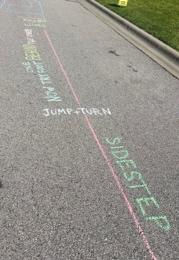Augmentative and Alternative Communication for People with Aphasia
- All Care Therapies

- Jan 14, 2021
- 1 min read
Aphasia is a language disorder caused by a brain injury or stroke (Geist, 2018). Aphasia can affect how a person understands language, speaks, writes, reads, and even gestures or points (Geist, 2018). It can also affect social relationships. Many patients and families are worried about augmentative and alternative communication (AAC) for aphasia, because there is a belief that a person is giving up on speech for a speech-generating device (Lasker & Garrett, 2008). However, AAC includes cell phone features, written choices, maps, pictures, communication cards, and more (Lasker & Garrett, 2008)! Speech therapists choose AAC options based on their patients’ needs and goals. The goal for AAC is to help people with severe communication disorders participate in their desired daily activities (Lasker & Garrett, 2008)!

References Garrett, K., & Lasker, J. (2013). Adults with Severe Aphasia and Apraxia of Speech. In Augmentative and Alternative Communication: Supporting Children and Adults with Complex Communication Needs (4th ed., pp. 405–445). Brookes Publishing.
Geist, L. (2018). AAC & Adults with Acquired Disabilities. Presented at the Augmentative and Alternative Communication Course at UNC-Chapel Hill.
Lasker, J., & Garrett, K. (2008). Aphasia and AAC. ASHA Leader / American Speech-Language-Hearing Association, 13(8), 10–13.




Comments